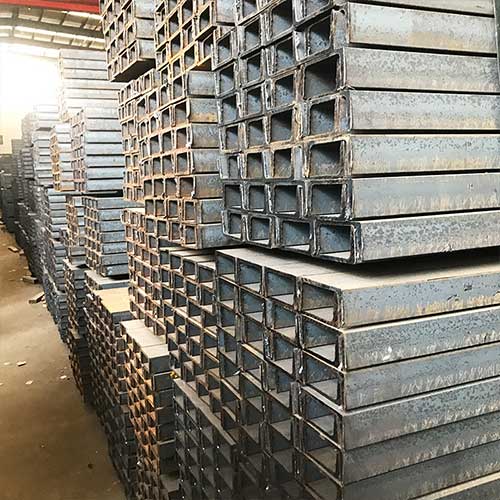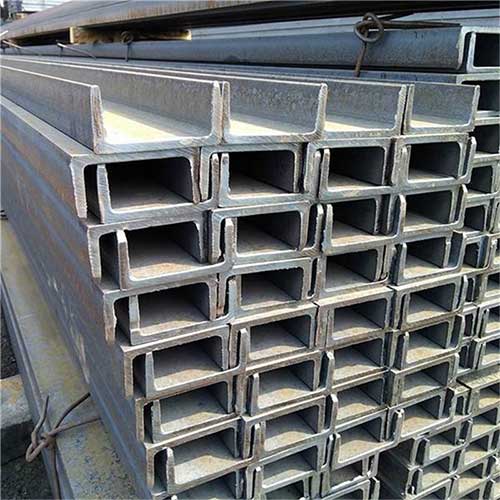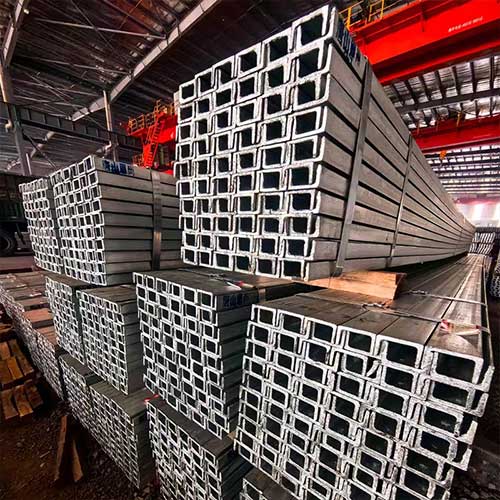Welcome to My Blog!
Before we dive into the content, I’d love for you to join me on my social media platforms where I share more insights, engage with the community, and post updates. Here’s how you can connect with me:
Facebook:https://www.facebook.com/profile.php?id=61565500692293
Now, let’s get started on our journey together. I hope you find the content here insightful, engaging, and valuable.
Table of Contents
Introduction

Channel steel, a type of structural steel, is used in various construction and industrial applications due to its durability, versatility, and cost-effectiveness. The shape of channel steel resembles the letter “C” and it is often utilized in building frames, railways, bridges, and machinery. Whether you’re in construction, manufacturing, or even DIY projects, understanding the different types of channel steel available on the market can significantly impact the success of your project.
In this comprehensive guide, we will explore the different types of channel steel, their properties, applications, and advantages. By the end, you’ll have a clearer understanding of how to choose the right type of channel steel for your needs.
What is Channel Steel?
Channel steel, often referred to as “C-channel steel,” is a length of steel with a cross-section resembling the letter “C.” This shape gives it exceptional structural strength, making it a popular choice in various industries. Channel steel is manufactured using processes like hot rolling or cold forming, resulting in different thicknesses and sizes.
The primary features of channel steel include:
- C-shaped profile: The vertical web with flanged edges provides strong support and durability.
- Versatility: It can be used in a wide range of structural applications, including framing, reinforcing, and support systems.
- Strength-to-weight ratio: Channel steel is strong yet lightweight, making it an ideal material for heavy-duty applications where weight is a concern.
Types of Channel Steel
There are several types of channel steel that vary in size, material composition, and profile. Understanding these differences is crucial for choosing the right material for your project. The main types of channel steel are as follows:
U-Channel Steel
U-channel steel, also known as “American Standard Channel,” is the most commonly used type of channel steel. It features a “U” shape with parallel flanges and a thicker center web, making it ideal for structural applications.
Advantages of U-Channel Steel:
- Offers high strength and load-bearing capacity.
- Suitable for a wide range of building and construction projects.
- Can be used for columns, beams, and other structural supports.
C-Channel Steel
C-channel steel has a similar profile to U-channel but with slightly different flange configurations. C-channel steel is often used in applications that require less load-bearing capacity or a more flexible design.
Advantages of C-Channel Steel:
- Lightweight, making it easier to handle during installation.
- Cost-effective compared to other types of steel channels.
- Used in various construction and machinery applications.
Slotted Channel Steel
Slotted channel steel features slots or holes in its flanges, allowing it to be used for bolting or connecting various components. This type of channel steel is typically used in modular framing systems, rack systems, and conveyor belts.
Advantages of Slotted Channel Steel:
- Easy to connect with bolts or screws, reducing the need for welding.
- Can be easily adjusted or modified for future changes.
- Ideal for building adjustable or modular systems.
Parallel Flange Channel Steel
Parallel flange channel steel features two parallel flanges with a straight web. It is more resistant to bending and torsion compared to regular C-channel steel. This type of channel steel is commonly used in applications that require superior strength and stability.
Advantages of Parallel Flange Channel Steel:
- Offers increased bending strength.
- Provides better structural support in heavy-duty applications.
- Ideal for use in bridges, industrial buildings, and large construction projects.
Lip Channel Steel
Lip channel steel features flanges that are bent or rolled to form a lip. This design helps prevent the channel from getting deformed during heavy loads. Lip channel steel is widely used in heavy machinery and in industrial applications where the channel will be subjected to high stresses.
Advantages of Lip Channel Steel:
- Provides additional stability and resistance to deformation.
- Stronger in bending compared to other types of channel steel.
- Often used in heavy-duty construction and equipment manufacturing.
Applications of Channel Steel


Channel steel is used in a wide variety of applications across different industries. Understanding the specific type of channel steel to use is essential for maximizing its performance in these applications.
Construction and Infrastructure
Channel steel is commonly used in the construction of buildings, bridges, and other infrastructure projects. It serves as a structural element in building frames, offering support to beams, columns, and walls.
Manufacturing and Machinery
In manufacturing, channel steel is often used in the production of machines, conveyor systems, and industrial equipment. Its strength and versatility make it suitable for framing and reinforcing structures.
Automotive and Transportation
Channel steel is used in the automotive and transportation industries, particularly in the manufacturing of vehicle frames, chassis, and support beams.
Storage and Shelving Systems
Slotted channel steel is commonly used in the creation of modular shelving and storage systems. Its ability to be connected with bolts allows for easy adjustments to the size and configuration of the storage system.
DIY and Home Improvement Projects
Channel steel is often used in smaller DIY projects for building supports, frames, and even furniture. Its durability and flexibility make it an ideal material for home improvement tasks.
Channel Steel Size and Dimensions
The size and dimensions of channel steel can vary significantly depending on the specific type and the application for which it is intended. The main factors that determine channel steel size include the following:
- Width of the flange: The horizontal part of the “C” shape determines the strength and load-bearing capacity.
- Height of the web: The height of the vertical section of the channel influences the steel’s overall rigidity.
- Thickness of the material: The thickness of the channel steel impacts its ability to withstand bending and torsional forces.
- Weight per meter: Channel steel’s weight is a crucial factor for transportation and handling.
Below is a table comparing the sizes and dimensions of different types of channel steel.
| Type of Channel Steel | Flange Width (mm) | Web Height (mm) | Thickness (mm) | Weight per Meter (kg/m) |
|---|---|---|---|---|
| U-Channel | 50 – 300 | 25 – 150 | 3 – 12 | 3.5 – 50 |
| C-Channel | 50 – 200 | 30 – 140 | 3 – 10 | 3.0 – 40 |
| Slotted Channel | 50 – 200 | 20 – 120 | 2 – 8 | 2.8 – 35 |
| Parallel Flange Channel | 50 – 400 | 30 – 200 | 5 – 15 | 5.0 – 70 |
| Lip Channel | 50 – 200 | 20 – 150 | 3 – 10 | 3.0 – 45 |
Advantages and Disadvantages of Channel Steel

Advantages
- High Strength: Channel steel provides excellent strength-to-weight ratio, making it suitable for heavy-duty applications.
- Versatility: It can be used in a wide range of industries and applications, including construction, manufacturing, and automotive.
- Cost-Effective: Channel steel is generally affordable and cost-effective compared to other materials like I-beams or H-beams.
- Ease of Installation: It is easy to cut, weld, and shape according to the specific requirements of a project.
Disadvantages
- Vulnerability to Corrosion: Like all steel products, channel steel can be vulnerable to rust and corrosion if not properly treated or maintained.
- Limited Aesthetic Appeal: Channel steel may not be suitable for applications where appearance is critical, as it is primarily designed for structural purposes.
- Requires Specialized Equipment: Depending on the project, certain types of channel steel may require specialized equipment or tools for installation.
Conclusion
Choosing the right type of channel steel is critical for ensuring the structural integrity, cost-effectiveness, and overall success of your project. Understanding the various types of channel steel, their sizes, and their respective applications allows you to make an informed decision based on your specific needs.
Whether you’re working on a construction project, manufacturing machinery, or creating storage systems, the right channel steel can provide the support and durability required for the task. Be sure to consider the type of load-bearing capacity, resistance to corrosion, and the weight limitations of each channel steel type to ensure optimal performance.
FAQ
What is the difference between U-channel and C-channel steel?
U-channel steel has a more rounded or “U” shape, while C-channel steel has a more angular design. U-channel is often used for heavy-duty applications, while C-channel is used for lighter structures.
Can channel steel be used for outdoor applications?
Yes, channel steel can be used outdoors, but it may require protective coatings to prevent corrosion. Galvanized channel steel is a good option for outdoor use.
How do I choose the right type of channel steel for my project?
Consider the specific load-bearing requirements, the type of application, and the environment where the channel steel will be used. U-channel is great for heavy-duty use, while slotted channels are ideal for adjustable framing systems.
Is channel steel recyclable?
Yes, channel steel is 100% recyclable, making it an environmentally-friendly material choice for construction and manufacturing projects.
How long does channel steel last?
With proper maintenance, channel steel can last for several decades. Protective coatings and regular inspections can help extend its lifespan, especially in outdoor applications.

